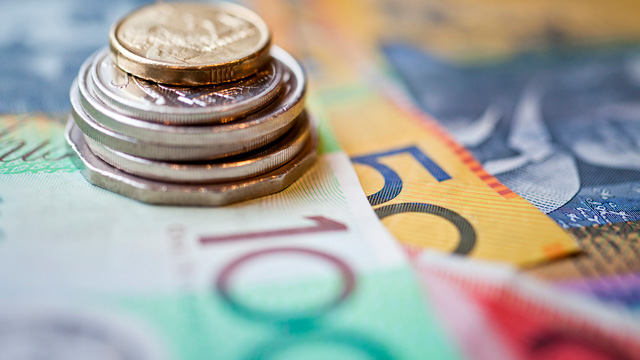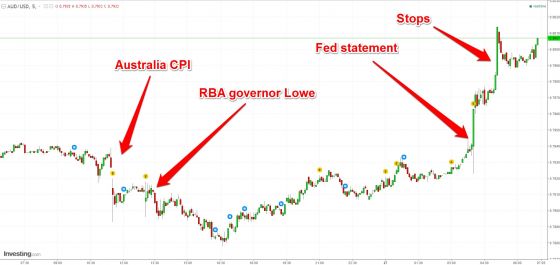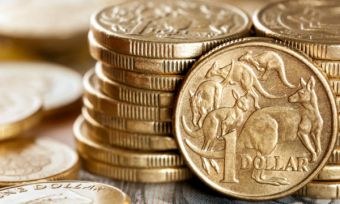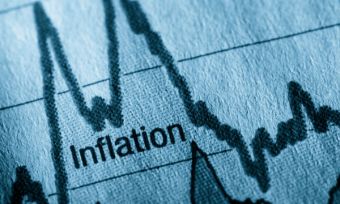The Australian dollar broke through 80 US cents overnight for the first time since May 2015 on the back of US dollar weakness, despite talk from the Reserve Bank (RBA) that rates will remain on hold for now.

The rise in the Aussie dollar (AUD) follows a rather ‘dovish’ monetary policy statement from the US Federal Reserve overnight, where the announcement of unlikely interest rake hikes anytime soon saw the US dollar fall on the back of other currencies, including Australia’s.
Westpac Senior Currency Strategist Sean Callow says key changes in language in the statement suggested US dollar weakening would be more “long lasting”, and interest rate hikes will not be as soon as expected.
“The FOMC (Federal Open Market Committee) said it expects to begin normalising the size of its balance sheet (allowing bonds to mature) ‘relatively soon’, compared to ‘this year’ in the previous statement, implicitly signalling the chances of a September rate hike are close to nil and deferring until December,” said Mr Callow.
OFX Head of Corporate Dealings Michael Judge says Australia has done a good job of maintaining AUD strength amid US dollar weakness.
“The USD is currently oscillating at a three-year low, and fund managers globally are favouring commodity-backed currencies ahead of any other – and they are not necessarily paying particular attention to economic data,” said Mr Judge.
Aussie #dollar 80 U.S. cents for 1st time since May 2015 as @federalreserve flags reducing $4 trillion bond debt by Sept this year @9NewsAUS pic.twitter.com/uzt9IwxrM8
— Ross Greenwood (@Ross_Greenwood) July 26, 2017
Aussie dollar recovers from inflation report and RBA speech
Prior to the Fed’s statement, the AUD fell off slightly following a weak inflation report for the June quarter and a speech on Wednesday from RBA Governor Philip Lowe, in which he discussed the prospect of increased interest rates in the near-future.
The Governor’s outlook for labour market conditions and the overall economy were rather subdued in his speech, and he hinted strongly towards Australian interest rates neither rising or falling anytime soon.
Dr Lowe said while a rise in wage growth would be good for the economy, it would not be driven by cutting rates.
“We have not sought to stimulate a rapid lift in inflation,” he said.
“The fact that the labour market has been generating sufficient jobs to keep the unemployment rate broadly steady has allowed us to be patient.”
The AUD drop off after Wednesday’s inflation results and Dr Lowe’s speech, and the quick recovery on the back of the dovish statement from the US Fed, can be seen in the chart below.

Source: Business Insider Australia
The Canstar perspective: how the rising AUD will affect consumers
Canstar’s General Manger of Wealth, Josh Callaghan, says the surging Aussie dollar is indeed being driven by economic conditions in the US, and may have positive and negative effects on Australian consumers.
“At 80 US cents it’s the highest we’ve seen the dollar in over 2 years, which will put pressure on our exporters selling into overseas markets, and in particular those selling into the US,” said Mr Callaghan.
“On the flip side, consumers can get the benefits of a stronger dollar by buying items directly from the US online, or using it as an opportunity to invest into the US market.”
With the RBA so far failing in its efforts to bring the Aussie dollar down, Mr Callaghan says external factors are actually more influential to the value of the dollar.
As for possible interest rate movements, consumers and economists continue to be left in the dark as central banks seem reluctant to make any firm predictions.
“It’s not yet clear enough what the future holds, as both the Fed and the RBA seem to be in a ‘wait-and-see’ position when it comes to interest rates,” he said.
US Close 27 July 17: Dow at record high- FED Res no change Aussie at 80 USC pic.twitter.com/06xev1QeBn
— CommSec (@CommSec) July 26, 2017






Share this article